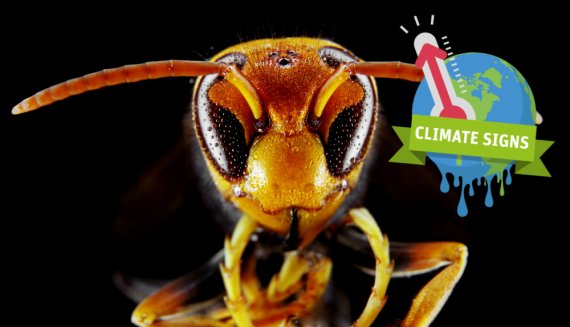Foto: shutterstock
| "Climate Signs" | Climate change is not about the future — it is happening now and we can already see the effects. In its ‘Climate Signs’ series, Resource will be looking over the summer at how climate change affects people’s daily lives all around the world and what WUR researchers are doing about this issue. |
|---|

The first time the Mediterranean ant was spotted, the hope was it would not survive the Dutch winter. But it did.
Bastiaan Meerburg, animal pest expert at Wageningen Livestock Research and director of the Dutch Pest & Wildlife Expertise Centre (KAD)
To what extent is this increase due to climate change?
‘That is difficult to say because climate change is more of a long-term process whereas these are really incidents. What we do see is that some exotic species are better able to cope because of the longer summers and milder winters. Take the Mediterranean ant, an exotic insect that was recently found on Churchillweg in Wageningen. The first time it was spotted, the hope was it would not survive the Dutch winter. But it did.’But the beasties aren’t coming under their own steam?‘True. Another key factor is that people are travelling so much and goods are being transported all over the world. One example is the Lucky Bamboo plants that were popular a few years ago and which contained dens of tiger mosquitoes. And the bedbug — although not an exotic species — has profited from the popularity of Airbnb. Anywhere can get bedbugs in principle, including five-star hotels, but it is important to deal with them quickly and correctly, otherwise the bedbug can easily spread. But you don’t always get that correct response with Airbnb.’
Is it a problem?
‘Now that climate zones are shifting, you see that all kinds of indigenous species are moving northwards, for example birds but also the oak processionary caterpillar. That is not necessarily a problem because the ecosystem will find a new equilibrium. On the other hand, we are now also seeing creatures that come from different regions and continents altogether. They are genuinely harmful to the Dutch ecosystem and our biodiversity because the system was not set up for them and they have no natural enemies here.’
Do you have an example?
‘The Asian hornet. It is incredibly aggressive and attacks honey bees, unlike the European hornet, which mainly eats flies and mosquitoes. In Brabant there are canals where the American crayfish have snapped off and killed all the water plants, causing oxygen levels to fall so low that fish are dying in huge numbers. Not only do they disrupt local ecosystems, exotic species also bring risks for public health. The tiger mosquito, for instance, can spread the dengue fever virus. So far, the National Institute for Public Health and the Environment has estimated the risk of this to be low, fortunately, because the mosquitoes were not infected. But if the mosquito larvae had already had the virus when they entered the Netherlands, that would have been a very different story. As yet, it is still an indigenous species — the tick — that causes most damage to public health.’
At present the municipalities are responsible for dealing with pests but not all municipalities give this an equally high priority.
What can we do about invasive species?
‘At the moment, efforts to combat them are just uncoordinated incidents. We also see restrictions on the use of pest control products (biocides) by private individuals for environmental and safety reasons. That is why it is particularly important to spot pests at an early stage. You don’t have to kill so many creatures then, which is better from an ethical perspective, and it is also easier. After all, when your colony of Mediterranean ants has reached 120 metres in length, you won’t get far with a spray can.’
How is pest control organized at the moment?
‘At present the municipalities are responsible for dealing with pests but not all municipalities give this an equally high priority. It would be good if the central government did more to facilitate pest control, and if there was more coordination nationally. For example by offering programmes that municipalities can join.’
Lees ook:
Soepschildpad maakt de weg vrij voor exotisch Rode-Zeegras
Exotische penseelkrab verovert Zeeland
CSI in de polder

